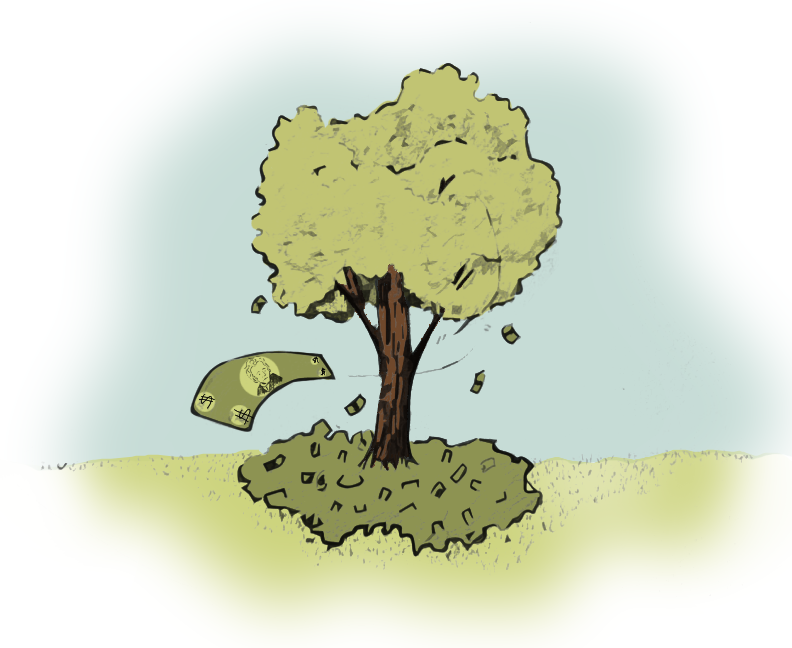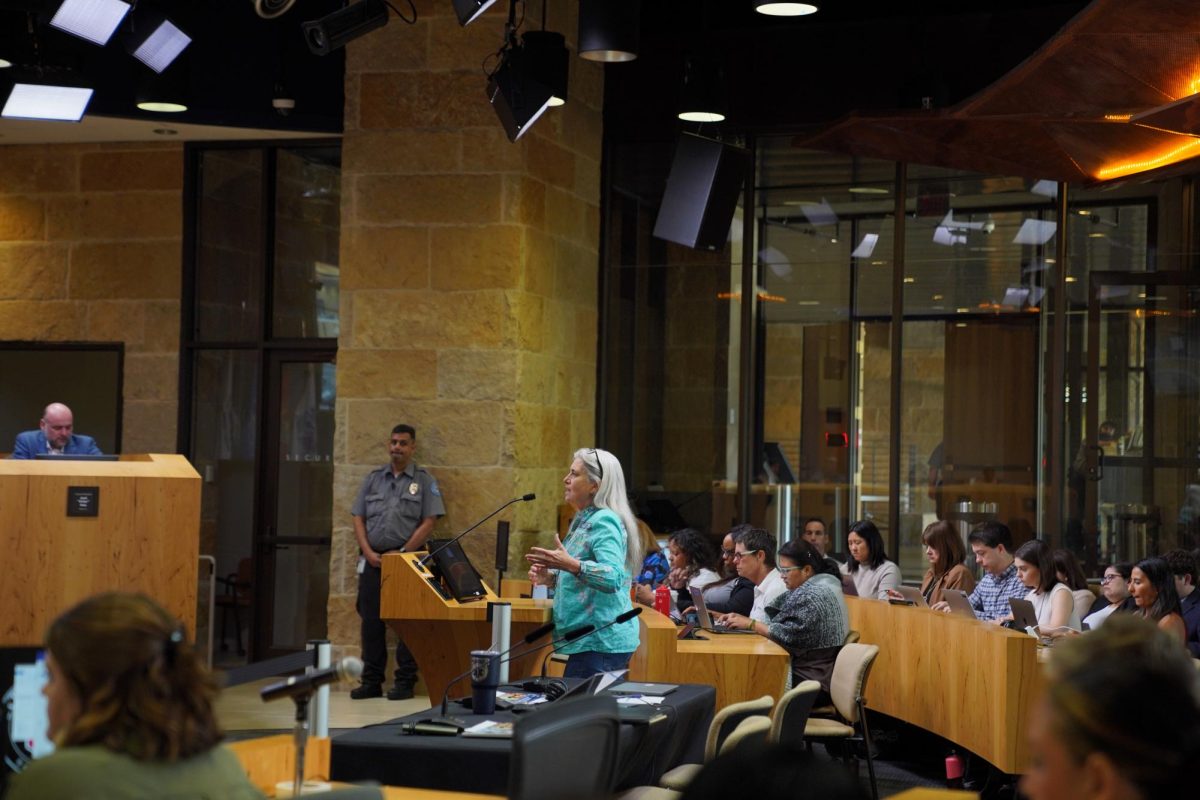2023 marked one of Austin’s hottest summer yet on record according to KXAN, bringing 38 Excessive Heat Warnings and over 70 days of triple-digit heat as of Oct. 8.
With the increasing temperatures and the risks of extended heat exposure, the city released strategies to aid Austin’s growing unhoused population in June, naming over 41 cooling centers that were open through the end of September.
Made up of 41 libraries and recreation centers around Travis County, the cooling centers provided designated spaces for unhoused individuals to stay inside and cool off during each centers’ regular business hours.
On days the National Weather Service issued excessive heat warnings, cooling centers individually adjusted operating hours, sometimes extending hours to 8 pm, according to a Sept. 29 press release from the city of Austin.
With a lack of standard hours set between each center, accessing information about the centers proved difficult and oftentimes confusing said Terry Cole, founder and director of Street Youth Ministry.
“You’re supposed to try to figure out which (cooling centers) are near you … and if they are open and how long are they open,” Cole said. “When you finally get yourself there, there’s no food, no water, you’re not allowed to sleep. You’re exhausted.”
Two months into Austin’s extreme temperatures, several non-profits and activists came together to ask the city for more emergency shelters and services for unhoused Austinites, said Andi Brauer, mission coordinator at Central Presbyterian Church.
Brauer said organizers from the Trinity Center, Central Presbyterian Church, St. David’s Episcopal Church and the Street Youth Ministry have urged the city to take further action since June, claiming that resources given by the city failed to meet the needs of Austin’s unhoused population.
Downtown advocates and center leaders say the city’s approach to providing accessible relief for unhoused individuals during extreme heat waves leaves much to be desired, with inconsistent information and a lack of accessible, adequate resources.
“Austin’s putting out an alert saying, ‘Stay in air conditioning, get shelter,’ but there’s not places available,” Brauer said. “If you’re a homeless person reading those heat advisories and alerts, you can’t do anything about it.”
The city of Austin’s Parks and Recreations department deferred the Texan’s requests for comment to the city’s Homeland Security and Emergency Management department, which failed to respond.
Weather-related homeless resources dramatically increased after the 2021 winter freeze, Cole said. Working with unhoused youth for two decades, Cole said that advocates in Austin have asked for cooling centers for years — a request that only came to fruition after the city created emergency heating centers in 2021.
“20 years ago, the city had a freeze shelter that they activated only if it was freezing, and only at the (Austin Resource Center for the Homeless) and that was insufficient,” Cole said. “(After the 2021 winter storm) they opened warming centers and let them open during the daytime and let people come in and stay there for the duration of the horrible weather event.”
In winter weather, Austin Public Health mandates that emergency shelters must open once temperatures drop below freezing. Brauer said there is currently no temperature mandate for extreme heat.
For extended services, the city of Austin currently runs one shelter, the Northbridge Shelter. The city also funds shelters operated by nonprofit partners.
ASWC, which is a partnership between the city and the Salvation Army, is the city’s only shelter specifically for female clients.
In June, the city announced a portion of the Marshalling Yard, a warehouse near the Austin-Bergstrom International Airport, would be converted into a temporary emergency shelter for unhoused individuals during extreme heat, containing up to 300 beds. Designated for those removed from encampments that face high fire risk in the midst of heat warnings, the shelter opened in mid-August and remains in operation.
“There should be readily available cold showers, there should be access to the pools that are cold; we shouldn’t have to wait for the City Council to pass that,” said Reverend Kristin Braun of St. David’s Episcopal Church, who works to provide resources and services to unhoused individuals. “Those policies could already be in place with resources ready to go when it hits 100 degrees and stays there.”
While she understands the need to warn at-risk populations of potential fire conditions, Brauer says the requirements to be eligible for shelter at the Marshalling Yard are not communicated widely.
“The way the city approaches their protocol for what’s high risk and what’s not,’… is faulty,” Brauer said. “It’s problematic. It’s very discouraging and frustrating for the community.”
St. David’s Episcopal Church, Central Presbyterian Church, Street Youth Ministry and the Trinity Center each provide services, resources and programs aimed at unhoused individuals, including showers, meal distribution and help navigating city resources. Leaders from each organization voiced frustrations about communication with the city, citing inconsistent answers and slow response times.
“We’re at the mercy of the city sharing information with us.” Trinity Center director Christian Rodriguez said. “There’s information that’s not made public yet, or information from different people, who are telling us one thing, and then another person saying something else.”
Brauer said it can often take at least two weeks to get unhoused people into shelters.
Each center keeps a waiting list, however finding information on how to get on it proves to be difficult, Braun said.
“We don’t really have anywhere to send anyone, nor do we know how to get someone into a facility,” Braun said. “We have people who have been on the waiting list for two years who are still sleeping on the streets.”
The city halted cooling center operations on Sept. 29, citing cooler temperatures on the horizon. But as cold weather approaches, Brauer said the struggle for appropriate weather resources for the city’s unhoused population will only continue, and more adequate resources are needed.
“I work 20 hours a week and I’m the only social worker for our outreach program; I alone cannot do much,” Brauer said. “What I can do is try to press city officials, with my fellow advocates, for them to have a response system that makes sense. The next big conversation is cold weather shelter. (The city) absolutely needs to have a system or a budget for that.”
At the tail end of a heat record-breaking summer and ahead of what may be an unseasonably cold Texas winter, Brauer said faith-based leaders want resources and accessible solutions for Austin’s unhoused population during extreme weather conditions.
“Let’s ask for (resources) now and be ready so that we don’t have to scramble,” Braun said. “We’re already preparing for (winter weather) and that’s something that the city could be participating in.”
Editor’s note: A previous version of this story incorrectly stated the shelters “the ARCH, the Austin Shelter for Women and Children, Casa Marianella and LifeWorks,” were run by the City of Austin. It also incorrectly reported the closure of ASWC in March, mistaking it for another Salvation Army in Austin that did close. The Texan regrets these errors.















